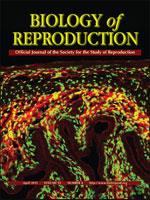Lipid peroxidation products such as the naturally occurring aldehyde 4-hydroxynonenal (4-HNE) are known to be cytotoxic toward different cell types, including spermatozoa. In order to understand this at the molecular level, we have employed a proteomic approach to characterize direct 4-HNE adducts on human spermatozoa. Several proteins were identified to be of particular interest, including aldehyde labeling of histone methyltransferase and dynein heavy chain. In addition, we found that 4-HNE bound to part of the activation segment, cysteine residue 199, of protein kinase A (PKA). Interestingly, at low levels, addition of 4-HNE had a stimulatory effect on PKA. However, this did not correlate to increased phosphotyrosine levels during capacitation. This data explains the link between reactive oxygen species and sperm toxicity. Given that epigenetic regulation is likely affected in oxidative-stressed spermatozoa, this data show that spermatozoa appear to shut down under these conditions before reaching the egg.
How to translate text using browser tools
11 February 2015
Defining the Mechanisms by Which the Reactive Oxygen Species By-Product, 4-Hydroxynonenal, Affects Human Sperm Cell Function
Mark A. Baker,
Anita Weinberg,
Louise Hetherington,
Ana-Izabel Villaverde,
Tony Velkov,
Jonathan Baell,
Christopher P. Gordon
ACCESS THE FULL ARTICLE

Biology of Reproduction
Vol. 92 • No. 4
April 2015
Vol. 92 • No. 4
April 2015
4-hydroxynonenal
epigenetics
methyltransferase
protein kinase
proteomics




